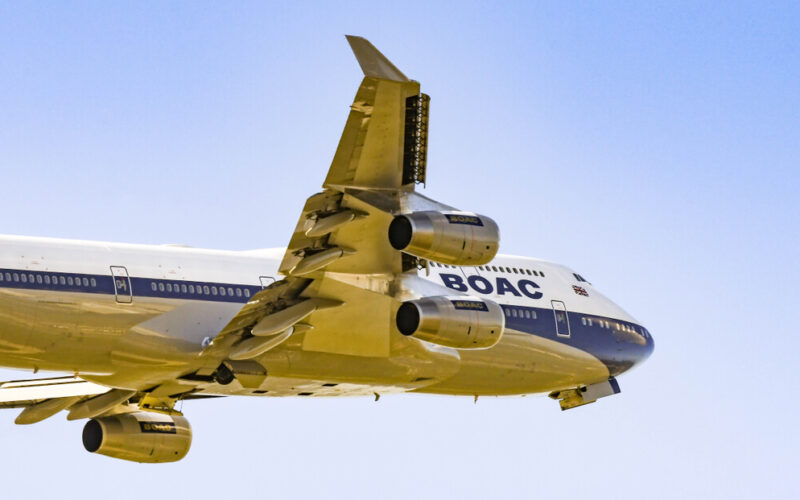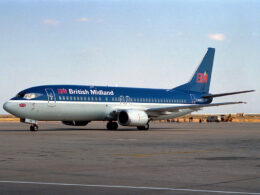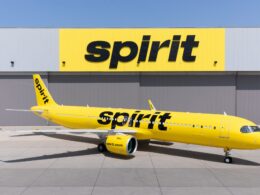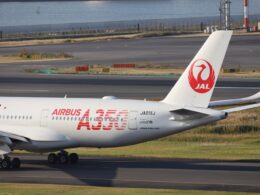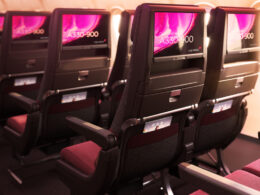The outbreak of COVID-19 has resulted in an unprecedented global crisis. Aviation, the industry that connects the furthest corners of the globe, has suffered a lot. And the pain is yet to end: airlines, due to plummeting demand and temporary travel restrictions are seeing their cash reserves burning in front of their eyes, despite their best efforts to cut-costs.
The International Air Transport Association (IATA) highlighted that on average, airline operating costs are 51% variable and 49% fixed and semi-fixed. While the variables, such as fuel, which is at a very low price point right now, and costs to operate the flights could be reduced to a minimum by grounding the fleet and reducing the number of flights, fixed costs are exactly what they are – fixed. Depreciation, insurance, leases for aircraft and other tangible assets are costs that are difficult to overturn.
Subsequently, the peaks that were predicted for the aviation industry over the coming years are now being pushed further back. With a 40% drop in passenger demand in 2020, and a recovery of 19% in 2021 and 10% in 2022, airlines would need 2,000 fewer aircraft than previously estimated, according to research done by Vertical Research Partners, reported Aviation Week.
Already now, airlines are reducing the amount of aircraft they have on their books, with older aircraft, like the Boeing 757s or 767s, or gas-guzzling giants like the Airbus A380 or Boeing 747 sent to their final resting places earlier than airlines themselves expected to do so.
However, could coronavirus also be the culprit of new airlines popping up left and right?
Soil for new airlines
As the great Rocky Balboa once said,
“It’s not about how hard you hit. It’s about how hard you can get hit and keep moving forward. How much you can take and keep moving forward.”
The words could not be less true for aviation, an industry that has seen a fair few gut-punches over the years. From numerous oil price shocks, financial crises and the post-September 11 travel slump, the industry has only risen in terms of passenger numbers over the years. It has recovered from each crisis, no matter how bad things got at one point.
But each recovery, just like each crisis, was different. The post-9/11 travel slump sent shocks through the United States’ commercial aviation and resulted in a consolidation process that was further cemented by the 2008 financial crisis. Now, the market is controlled by four players with smaller and more niche airlines, like jetBlue or Spirit Airlines (S64) (SAVE) , trying their best to make inroads on the top four’s market share. While arguably, the top four have slept on their laurels in terms of subjective passenger experience, their pre-coronacrisis results were impressive, to say the least.
In terms of other markets, Europe has seen its fair share of consolidation as well. Air France-KLM, Lufthansa (LHAB) (LHA) , International Airlines Group (IAG) (IAG), all have used difficult periods in time to grow as groups or form bigger entities by a way of mergers. Low-cost carriers used opportunities of downturns to reduce their long-term and fixed costs by acquiring aircraft on the cheap whilst global demand was down and aircraft manufacturers had nowhere to go. Factories were running despite economic downturns and they had to make up at least some of the manufacturing costs.
Thus, low-cost carriers managed to boom. And not only in Europe. Asia also has seen a magnitude of low-cost carriers causing a bloodbath amongst full-service airlines or more niche-like carriers from smaller countries, as the business model that utilizes lower operating costs is much more robust and is able to bully out its competition.
The robustness was showcased during the coronacrisis. According to the Centre of Aviation (CAPA) analysis, Wizz Air and Ryanair have the best liquidity, with 48% and 47% of total revenue, respectively. Out of all the major airline groups in Europe, however, one low-cost carrier is at the bottom of the barrel – Norwegian. A period of unsustainable growth, constant issues with the Rolls-Royce 1000 engine that is mounted on the company’s Dreamliners and the continued period of grounding of the 737 MAX, has put the airline in a precarious position to fold, even before the outbreak of COVID-19. While Norwegian has become an excited adventurer on a cost-cutting quest, including downsizing its operations, the current crisis has hit the airline hard.
So much so, that the Norwegian government had to step in and provide a safety net for the airline in the form of a state loan guarantee.
Norwegian is not the only airline that has received attention from its government. The United States approved a $25 billion in grants for passenger airlines, with a further $25 billion in loan relief. Cargo airlines ($4 billion in grants, $4 billion in loans) and airline contractors ($3 billion) were also given lifelines. Both the Dutch and French governments are involved to ensure Air France-KLM’s survival. German lawmakers are also involved in discussions with Lufthansa (LHAB) (LHA) to save the latter’s bum, reported the New York Times. In return, Germany would possibly get non-voting capital in the airline group.
The trend is obvious: governments around the world are very keen to ensure that airlines survive the downturn. Connectivity and employment are crucial for a country. The former brings obvious benefits, including a direct correlation between the growth of connectivity and productivity growth, according to a study by IATA. The latter, meanwhile, is important for every government, especially during such downturns like the current one, as saving jobs will save the ruling party’s face. Or at least would help in preserving it.
However, not every government has the so-called luxury of having an airline to save.
The return of the flag carrier?
For smaller countries, especially in Europe, connectivity is crucial. The benefits, as outlined in the aforementioned IATA study are subjective, but quite obvious.
But the same smaller countries have a problem, whereupon if they cannot guarantee connectivity themselves in the form of a national carrier, they have to rely on outside help to do so. One recent example could be Slovenia and the bankruptcy of its airline, Adria Airways. While Lufthansa Group swooped in and overtook former Adria routes, they were at uncomfortable times and at reduced frequencies.
Now, with the coronacrisis in full swing and airlines bleeding cash, the recovery will more than likely lead to big airline groups to focus on their home markets, which have bigger profit margins, first. Thus, some countries might be left with little-to-no flights to crucial destinations, even within the intra-European route map.
Slovenia, the highlighted example could be at the end of a stick of such events. Hungary is another potential case in Europe – the flag carrier, MALEV, went bust in 2012 after a series of financial issues. Its previously served routes to North America, namely New York’s John F. Kennedy International Airport (JFK) and Toronto Pearson International Airport (YYZ), for example, were replaced by LOT Polish Airlines over the recent years. While Toronto is still left out as a direct route, LOT serves JFK. Nevertheless, with a significant amount of reductions in airline budgets across the board, the question is whether those routes would return after the COVID-19 imposed crisis goes away. Numerous other countries in Europe also do not have their own flag carriers.
Having control of your own tourism flow in and out of the country and making sure that the same connections are comfortable for business travelers is difficult when the connections are served by foreign entities. After all, their business decisions are based on profitability, rather than the economic benefits for the country. Furthermore, private companies have limited ways to ensure liquidity when the pendulum of profitability swings to the red. For governments, raising cash is much easier, as government debt is much more secure than private debt.
Current market conditions
For one, Italy already made a pre-emptive decision to once again nationalize Alitalia from the hands of Etihad Airways, which owned a 49% stake in the carrier. While COVID-19 has ravaged Italy for the past few months, losing its national flag carrier on the road to recovering from the crisis would make the situation just that much more difficult. Even in the short-term, Alitalia’s aircraft were recently seen flying out to China to bring back critical medical supplies to help the Southern European country battle the effects of the breakout. While Alitalia does have its own set of issues, including high operating costs and a lot of pressure from the continent’s low-cost carriers, it is still vital to the Italian economy. Especially since Italy already lost two airlines in 2020: Air Italy and Ernest Airlines closed their doors, leaving gaps in connectivity to the outside world.
The market, while certainly on a downward spiral, could provide opportunities for those that are looking to purchase assets on the cheap. Acquiring new aircraft is potentially much easier right now. For example, Avolon, an Ireland-based aircraft leasing company, announced that it canceled an order for 75 Boeing 737 MAX aircraft, three Airbus A330neo jets in its Q1 2020 business update. Furthermore, it deferred the deliveries of 25 narrow-body aircraft to 2024 or thereafter: 16 MAXs and nine Airbus A320neo.
While previously manufacturers were sold out until 2025, now delivery slots are becoming available much sooner. Manufacturers still need to sell aircraft to conduct business: with demand dwindling, naturally, the price would potentially fall to attract customers, as aircraft builders are interested in delivering aircraft immediately, instead of producing white-tail aircraft to sit in parking lots across the globe.
Moreover, as airlines will be reluctant to return to their pre-coronavirus schedule frequencies due to the smaller passenger numbers, acquiring or leasing slots in the world’s busiest airports would be easier.
One example could be the situation with Virgin Australia. The Australian airline asked the government to provide an $841 million (AUD1.4 billion) loan to help it weather the storm. Some ministers were reluctant to do so, as Virgin Australia has faced financial issues and struggled to achieve a profit even before the coronacrisis, reported Australia’s ABC News. The collapse of the carrier would leave Qantas in a monopoly-like position in the Australian domestic market, leaving consumers with little choice once the crisis ends. Limited choices automatically leave Qantas with the ability to hike prices, as passengers would still need to travel.
Establishing a government-owned domestic airline could help the Australian consumer, however, the question remains at what cost.
While on paper getting aircraft, whether it be used or new, would be cheaper, and the fact that airport infrastructure would have less pressure in the short-term, makes an attractive case to start-up an airline. Governments around the world have plenty to think about in the short-term in terms of taking care of its citizens. Splashing the cash on establishing an airline, which is more than likely not to provide a profit in its first few years of operations is not something that a democratic government can afford to do so: after all, the voter’s cash would be the one that would be splashed, potentially being the bullet in the foot of a politician’s career.
Nevertheless, governments around the world are setting a trend of taking care of their airlines and connectivity. Question is, of course, how deep into their pockets are they willing to go?





